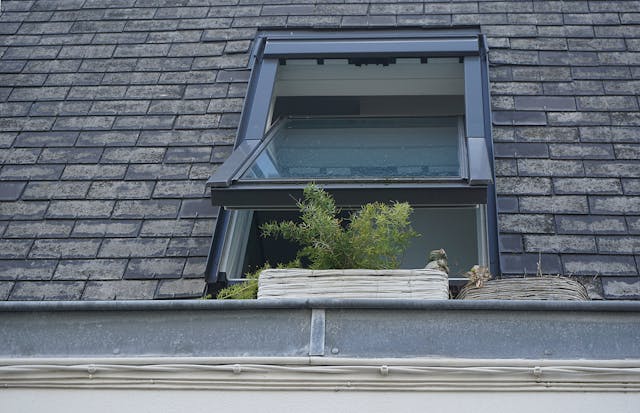Owning a home means taking on the responsibility of maintaining it, and one of the most critical areas to consider is your roof. It’s the first line of defense against the elements, yet, unfortunately, it often suffers from weather-related damage. This raises a vital question: does home insurance cover roof damage? In this comprehensive guide, we’ll break down everything you need to know, from the types of coverage available to what to do if your roof is damaged.
Understanding Home Insurance Coverage
What is Home Insurance?
Home insurance protects homeowners against unexpected losses, offering financial coverage in the event of damage, theft, or other disasters. It’s designed to help replace or repair the structure of your home and belongings inside.
The Role of Roof Coverage in Home Insurance
Your roof, like the walls and foundation of your home, is covered under most standard home insurance policies. However, understanding what exactly is covered and under which circumstances is key to avoiding unexpected out-of-pocket expenses.
Types of Roof Damage Covered by Home Insurance
Weather-Related Roof Damage
Weather can be harsh, and sometimes your roof bears the brunt of it. From hailstorms to heavy winds, your roof could suffer significant damage. Most home insurance policies will cover damage caused by specific weather events.
Wind Damage
Wind is one of the most common causes of roof damage. High winds can lift shingles, causing them to become loose or blow off entirely. In such cases, your home insurance is likely to cover the cost of repairs or replacement, as long as the damage is directly caused by the windstorm.
Hail Damage
Hailstorms can cause immediate damage to roofs, particularly if the hailstones are large. Dents, cracks, or holes in the shingles can let water in, causing further damage to the structure beneath. If your roof is damaged by hail, your policy should cover repairs.
Water Damage from Roof Leaks
If your roof is compromised and begins to leak, it can cause water damage to your ceilings, walls, or even the floors of your home. Home insurance policies usually cover the repairs to the roof as well as any resulting water damage inside the house.
Fire-Related Roof Damage
If a fire breaks out and damages your roof, most home insurance policies will cover the repairs or replacement costs. This can include fires caused by electrical issues, cooking accidents, or other causes.
Accidental Roof Damage
Accidental damage can happen when objects fall on your roof, like a tree branch or debris from a neighboring property. If the incident is unforeseen and not due to negligence, your home insurance might cover the repairs.
What’s Not Covered by Home Insurance?
Wear and Tear
Insurance isn’t meant to cover routine maintenance issues. Over time, your roof will naturally age, and shingles may deteriorate. This normal wear and tear are generally not covered by home insurance policies.
Negligence
If the roof damage is a result of neglect—such as failing to repair known leaks or ignoring signs of roof wear—home insurance might refuse to pay for the repairs. It’s important to regularly inspect your roof and address any issues before they worsen.
Flood Damage
Standard home insurance doesn’t typically cover flood damage, so if your roof is damaged due to rising water, you may need to purchase separate flood insurance to help cover repairs.
How to File a Roof Damage Claim
Step 1: Document the Damage
As soon as you notice roof damage, take detailed photographs or videos. This will serve as evidence when filing your claim. It’s important to capture the extent of the damage, including any visible leaks or missing shingles.
Step 2: Call Your Insurance Company
Once you’ve documented the damage, contact your insurance provider. Most companies will send an adjuster to assess the situation. Be prepared to provide them with your evidence and any relevant details about the storm or event that caused the damage.
Step 3: Get an Estimate from a Roofing Contractor
Many insurance policies require a third-party estimate for the cost of repairs. Hiring a reputable roofing contractor to assess the damage and provide an estimate is often a necessary step in getting your claim approved.
Step 4: Review the Adjuster’s Report
After the adjuster visits your home, they’ll submit a report outlining the extent of the damage and the cost to repair it. Review this report carefully and ensure it matches your own assessment. If there are discrepancies, you may want to hire an independent adjuster or contractor for a second opinion.
Step 5: Get Your Roof Repaired
If your claim is approved, the insurance company will pay for the repairs up to your policy’s coverage limits. In some cases, you may be required to pay a deductible before your coverage kicks in.
How Much Does Home Insurance Cover for Roof Damage?
Policy Limits and Deductibles
The amount of coverage you get for roof damage will depend on your home insurance policy’s limits. For example, your policy might cover the full cost of repairs, minus your deductible. However, the value of the claim might be subject to depreciation, meaning older roofs could get less compensation.
Actual Cash Value vs. Replacement Cost
Homeowners should be aware of the type of policy they have. There are two main types of coverage:
-
Actual Cash Value (ACV): This option covers the replacement cost of the roof minus depreciation. If your roof is old and worn, ACV might not cover the full replacement cost.
-
Replacement Cost: With replacement cost coverage, the insurer pays for the full cost of replacing your roof, without factoring in depreciation.
How to Protect Your Roof and Ensure Coverage
Regular Roof Inspections
One of the best ways to avoid costly repairs and ensure your roof is adequately covered is by scheduling regular roof inspections. This can help catch problems before they become major issues, ensuring your roof remains in good condition and your insurance policy remains valid.
Preventive Maintenance
Keeping your roof well-maintained is essential for extending its lifespan. Regularly cleaning gutters, removing debris, and checking for loose or missing shingles can prevent damage that may lead to insurance claims.
Upgrading Your Roof
If your roof is getting older, consider upgrading to more durable materials that are better suited to handle extreme weather conditions. This could make your home insurance more affordable and increase your chances of receiving full coverage in the event of a claim.
Conclusion
Home insurance can provide valuable coverage for roof damage, but it’s important to understand the details of your policy. From weather-related damage to fire, many incidents are covered, but wear and tear, neglect, and flood damage typically aren’t. By keeping your roof well-maintained and understanding your policy, you can ensure you’re prepared in case disaster strikes. Always keep an eye out for early signs of damage and work with your insurer to navigate the claims process efficiently.
FAQs
1. Does homeowners insurance cover roof damage caused by a tree falling?
Yes, most homeowners insurance policies will cover roof damage caused by a tree falling, as long as the incident is accidental and not due to neglect.
2. Can I file a roof damage claim if my roof is old?
You can file a claim, but the amount you receive may depend on the depreciation of your roof. If you have a replacement cost policy, you may be able to replace the roof for its full value.
3. Will home insurance cover the cost of a new roof after a storm?
If the storm causes significant damage to your roof, home insurance may cover the repair or replacement costs, minus any deductible.
4. How do I know if I have actual cash value or replacement cost coverage?
You can check the details of your home insurance policy or contact your insurance provider to confirm whether you have actual cash value or replacement cost coverage.
5. Is roof damage from normal wear and tear covered by insurance?
No, normal wear and tear are not covered by home insurance. Insurance only covers unexpected damage caused by external factors like storms, fire, or accidents.
Please don’t forget to leave a review.


